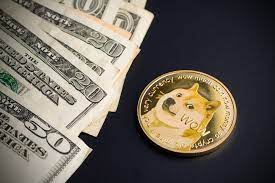Coins, those small and unassuming metal discs that we often take for granted in our daily lives, hold a fascinating world of history, culture, and art within their intricate designs. Numismatics, the study and collection of 狗狗幣未來, banknotes, and medals, opens a captivating window into the past, allowing us to explore civilizations, rulers, and events that have shaped human history.
At its core, a coin is not merely a piece of currency, but a tangible representation of a society’s values and aspirations. From the ancient Greek drachms adorned with deities to the Roman denarii that immortalized emperors, each coin tells a story of its time. The evolution of coinage mirrors the advancement of human societies – from the first crude metal pieces to the finely minted works of art we have today.
Numismatics enthusiasts, known as numismatists, delve into the study of coins for a myriad of reasons. For some, it’s the thrill of the hunt, as they scour markets, auctions, and online platforms in pursuit of rare and valuable specimens. For others, it’s the joy of unraveling the historical context behind each coin – a process akin to detective work that often unveils forgotten dynasties, economic systems, and trade routes.
One cannot overlook the artistic aspect of coins, either. Minting a coin is not simply a mechanical process; it’s an opportunity for craftsmen to leave their mark on history. From intricate engravings to delicate embossing, coins often feature breathtaking designs that capture the essence of their era. They encapsulate the aesthetics of their time and can serve as snapshots of the prevailing artistic sensibilities.
The value of coins extends beyond their historical and artistic significance. In the world of numismatics, collectors seek not only to acquire rare pieces but also to preserve and protect them for future generations. Proper storage, conservation, and documentation are essential to maintain the integrity and value of these historical artifacts.
